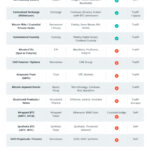The cryptocurrency market is buzzing with activity, particularly surrounding Bitcoin (BTC), which has seen a remarkable rebound in its price. After dipping below $75,000 earlier this month, Bitcoin’s value has surged to a striking $94,000, attracting attention from both investors and market watchers alike.
This upward movement is largely attributed to significant buying behavior from crypto whales—investors with substantial holdings who are actively purchasing coins. Data from Glassnode, a leading blockchain analytics firm, highlights this trend through its Accumulation Trend Score, which measures the activities of these major investors. Currently, wallets containing over 10,000 BTC have an impressive accumulation score of 0.90, indicating strong buying activity. Similarly, wallets with between 1,000 to 10,000 BTC are also joining the accumulation trend with a score of 0.7, suggesting a robust interest across larger investment categories.
“So far, large players have been buying into this rally,”
noted Glassnode in a recent update shared on social media platform X. Not to be overlooked, smaller wallets are displaying a growing inclination to accumulate as well, reflected in a trend score of 0.5.
“A review of historical patterns suggests that this could imply re-accumulation of assets by investors,”
commentators from CryptoQuant remarked. Such investment behaviors are seen as a bullish signal, hinting at renewed confidence in Bitcoin’s future trajectory.

Bitcoin Price Recovery Driven by Large Investors
The recent recovery of Bitcoin’s price presents significant implications for individual investors and the market as a whole. Here are the key points related to this development:
- Price Recovery: Bitcoin (BTC) has returned to $94,000 after previously dropping below $75,000.
- Activity of Crypto Whales: Large investors, or ‘whales’, are actively purchasing bitcoins, which is a strong indicator of market confidence.
- Accumulation Trend Score: Glassnode’s Accumulation Trend Score reflects the purchasing behavior of various wallet sizes:
- Wallets holding over 10,000 BTC have a score of 0.90.
- Wallets holding between 1,000 to 10,000 BTC scored 0.7.
- Smaller wallets show signs of accumulation with a trend score of 0.5.
- Centralized Exchange Outflows: The highest BTC outflow from centralized exchanges in two years suggests investors prefer direct custody over trading on exchanges.
- Long-Term Holding Strategy: Significant outflows indicate a shift towards a long-term investment strategy among Bitcoin holders.
“So far, large players have been buying into this rally,” Glassnode noted on X.
This information may impact individual investors by indicating a potential bullish trend, encouraging them to consider their own investment strategies and market timing.
Bitcoin’s Recent Surge: A Deep Dive into Market Trends
The recent resurgence of bitcoin (BTC), climbing back to $94,000 from lows below $75,000 earlier this month, suggests a compelling narrative driven by significant actions from crypto whales—large-scale investors making substantial purchases. This uptick points to a revitalized confidence in the cryptocurrency market, drawing parallels with other pivotal moments in Bitcoin’s history where whale activity marked substantial reversals.
Comparatively, the movements in the BTC market align with trends observed in other digital currencies, such as Ethereum (ETH), which also sees disproportionately high trading volumes driven by wealthy investors. However, while ETH’s recent rally has been supported by robust DeFi activity and NFT demand, Bitcoin’s surge is more closely tied to the behavior of institutional players and a shift towards direct coin custody, as indicated by the substantial outflows from centralized exchanges—an unprecedented occurrence in the last two years.
The accumulation trends revealed by platforms like Glassnode and CryptoQuant highlight the competitive advantages bitcoin currently enjoys. The high accumulation score among large wallets signifies that these influential investors are betting on BTC’s long-term value. Gates opened by this trend present promising opportunities for those invested in BTC, allowing them to benefit from potential price appreciation as supply diminishes on exchanges. This strategy might prove detrimental for smaller investors or those holding onto coins within exchanges, as the very act of selling pressure eases for whales could leave them vulnerable when prices pivot again.
However, as the proverbial tide lifts all boats, this momentum could pose challenges for newer entrants into the market who may find it difficult to compete against established players with deep pockets. The preference for direct custody of digital coins not only reflects a growing sentiment among seasoned investors regarding security and legitimacy but may inadvertently create a barrier for small-scale investors who may have to shoulder volatility without the protective strategies employed by larger entities.
In summary, BTC’s recent rebound driven by whale activity paints an optimistic picture for seasoned investors, indicating a potential long-term positive trend. However, it also introduces complexities for smaller, less experienced investors who might be swept along by this surge but left vulnerable should the market shift again.

















